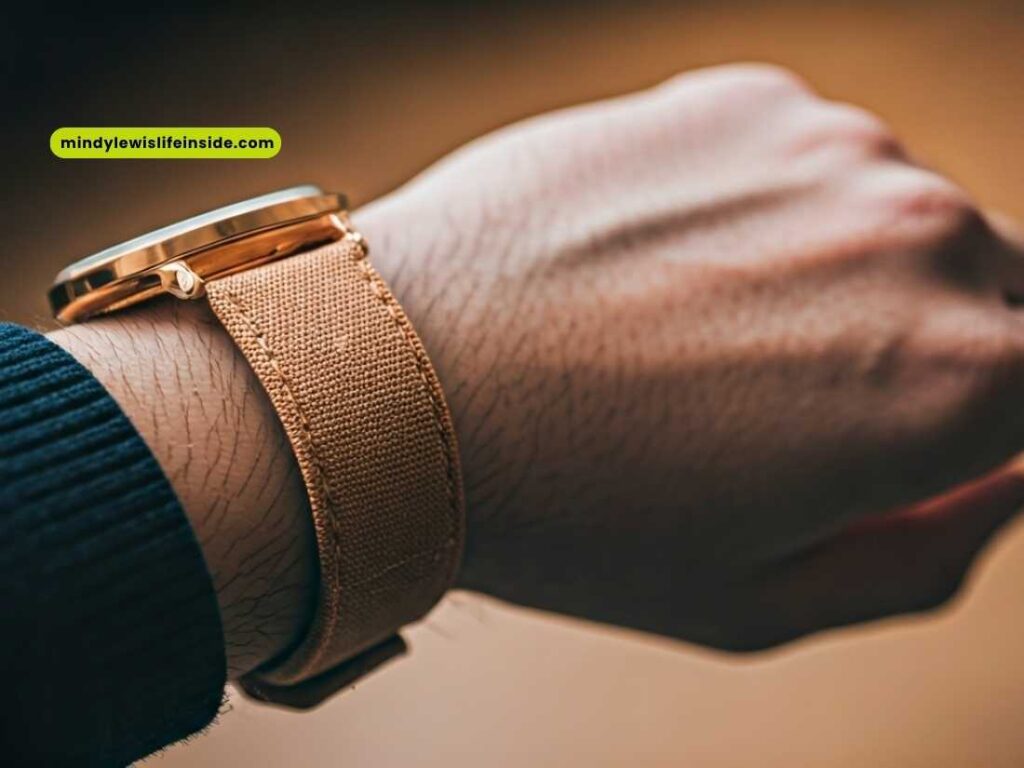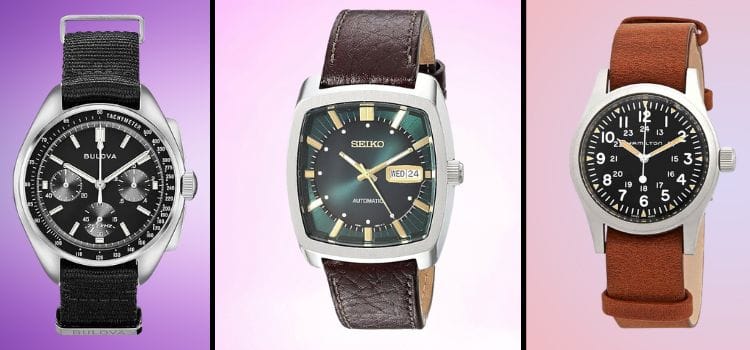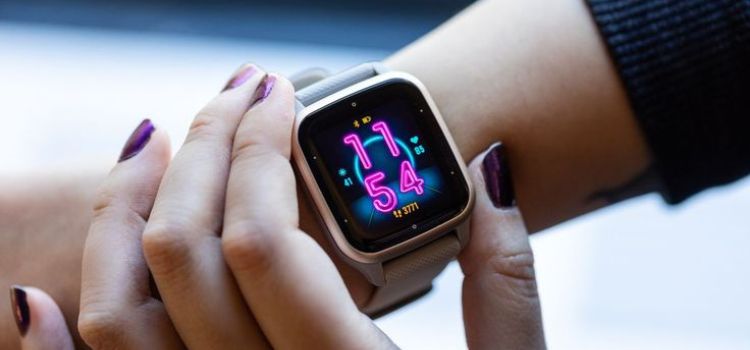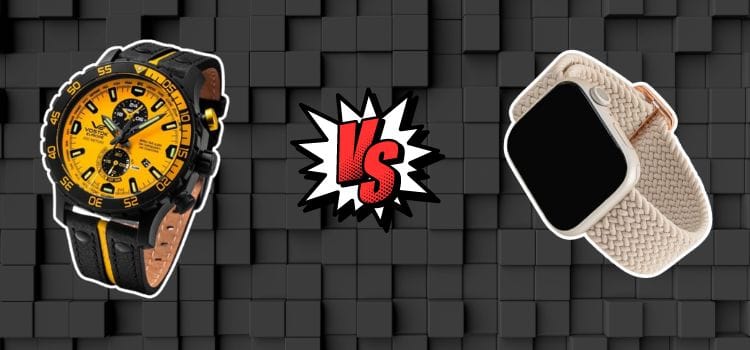Should I Wear Watch on Left or Right? What Experts Say

As an Amazon Associate, I earn from qualifying purchases
Have you ever thought about the correct wrist for wearing your watch? For years, there has been talk about putting your watch on the left wrist or the right wrist. Most people choose the left wrist. This is because many people use their right hand more. But personal preferences also matter in this choice. What you do every day and how your watch feels on your wrist also help you decide.
The best wrist for your watch should feel good to you. It should be easy to wear. It also needs to work for your life and habits, so the practicality of the choice matters.
Are you interested in knowing what the experts have to say about the correct wrist for your watch? Let’s find out more together!
Understanding the Tradition of Watch Wearing

The way people pick which wrist to wear a watch on is about what is practical and what has always been done. Most people are right-handed. That is why the left wrist is common for wearing watches. Your dominant hand gets used more when you do daily activities. Wearing your watch on the opposite wrist keeps it safer and out of the way.
A long time ago, people used pocket watches. They would put them on the non-dominant side to help the watches last longer. Wristwatches then showed up as a good choice for the military. After that, everyone started to use them as a part of their daily style.
Historical Preferences and Cultural Influences
The first wristwatches came about because soldiers needed them. In the late 1800s, many soldiers took pocket watches and put them on their left wrist. Most people are right-handed, so this made it simple to use the watch during a fight. This spot also helped keep the watch safe. The watch could still work, and it would not break as easily.
There is also some history with culture and how people wear watches. In the past, pocket watches were a sign of status and mainly men used them. Wristwatches at first were made for women. After a while, watchmakers made changes, and wristwatches became something that everyone could have. Now, wristwatches are about both personal style and being useful.
People today use wristwatches in different ways. Some like to wear a watch as part of their look. Others choose their watch because of how well it works or for practical reasons. No matter where you wear your watch, it will show your own personal style and what you need. Pocket watches and wristwatches both have a place in history because of this.
How Watch Wearing Practices Have Evolved in the U.S.
In the United States, many people wear a watch for both old traditions and easy use. Over the years, people have moved away from strict rules. They now choose what fits best with their daily activities and style.
Watch manufacturers have made this easier by creating designs that work for both the left hand and the right hand. Smartwatches let you wear them on either wrist. This can help when you get notifications or want to use new features, so you can change to the hand that feels better to you.
Still, one thing does not change—comfort is the most important part. Maybe you like having your watch on your left hand for easy use, or you go for the right hand to fit your personal style. You should pick what fits best with your dominant hand and how you spend your day. This is the best way to enjoy your timepiece every day.
Dominant Hand vs. Non-Dominant Hand: What Experts Recommend
Your watch does not have to stay on the left wrist. Experts say you should pick a wrist based on your dominant hand and your non-dominant hand. Most people say to wear your watch on the opposite wrist from your dominant hand.
Why is this good? Wearing your watch on your non-dominant hand helps you during daily activities. It will not get in the way as much. If you are right-handed, this means you will wear it on your left wrist. If you are left-handed, then you use your right wrist. In the end, finding the correct wrist to wear your watch is about what feels comfortable and keeps your watch safe while you go about your day.
Practical Reasons for Wearing on the Non-Dominant Hand
There are some good reasons to wear a watch on the opposite wrist instead of your dominant hand. Here are a few:
- Task Efficiency: Your dominant hand is free for things like writing or lifting. The watch does not get in the way.
- Safety: Watches on your dominant wrist can get scratched or bumped when you use your hand a lot.
- Accessibility: You can easily reach the crown or adjust the watch on your other wrist without needing to take it off.
- Comfort: Many people feel it is more comfortable to have their watch on the wrist that moves less.
This setup is helpful for people who do a lot of typing, manual work, or sports. In the end, most people go with the non-dominant hand. It gives them less trouble, keeps the watch safe, and is more practical.
Considerations for Left-Handed and Right-Handed Individuals
Left-handed people can have a hard time in a world made for those who use their right hand more. The right wrist is often where they put a watch. This keeps their dominant hand free for other things.
Right-handed people have many watch choices made for the left wrist. The crown on these watches is at the 3 o’clock spot, which makes the watch easy to use. If you are left-handed, you may look for timepieces with the crown at the 9 o’clock position. This helps you make changes more easily with your right wrist and keeps your dominant hand free.
No matter your hand, you can pick what works best for you. Some go for what feels comfortable. Others wear their watch in a different way, and some break from tradition. Either way, your crown and the spot you wear your timepiece come down to individual preferences. You get to decide what fits best in your everyday life.
Functional and Lifestyle Factors to Consider
Choosing the wrist to put your watch on is not just about a rule or tradition. It comes down to daily activities, practicality, and your lifestyle. The way you work, write, or even play sports can change which wrist feels right.

But it is not only about what works in day-to-day tasks. Your personal style and comfort are also important. For example, if you have fewer things, like bracelets, on one arm, your watch may look or feel better on that side.
When you think about your routine, daily activities, and personal style, it is much easier to choose a spot that lets you be both useful and good-looking, without getting in your way.
Comfort, Safety, and Daily Activities
Wearing your wristwatch should be about what feels right for you and what keeps you safe. Here’s why these things are important:
- Comfort: The wrist that does less movement gets less irritation. This makes wearing your wristwatch feel better.
- Safety: If your wristwatch is on your busy hand, it can get more bumps from walls, tables, or tools.
- Daily Tasks: Things like typing, cooking, or lifting feel easier when your wristwatch doesn’t get in the way.
- Style Alignment: If you have rings or bracelets, wearing your wristwatch on the same hand can look good and match your personal style.
From being useful to helping your personal style, where you put your wristwatch can change with what you need. There is no one good way for all people. Pick what works best for you.
Impact of Technology and Modern Watch Designs
Modern watch designs now give you more ways to wear them than before. Smartwatches have changed the way people use watches by working well on both wrists. You get notifications, easy control, and straps that feel good on your wrist.
| Feature | Benefits |
|---|---|
| Reversible Crown Position | Good for left-handed people who use a watch on their right hand. |
| Versatile Strap Design | Straps be made to fit well, even during tough activities. |
| Digital Notifications | You can place your watch where you see alerts in the best way. |
As technology moves forward, watch manufacturers keep up with what people need and want. Added features, better straps, and new crown choices mean you can wear your watch your way. Now, how you wear your watch does not stop you from enjoying style or feeling comfortable.
Conclusion
To sum up, choosing which wrist to wear your watch on can depend on history, culture, and what feels comfortable to you. Many people and some experts suggest wearing your watch on your non-dominant hand because it can be more useful for your daily activities.
Still, it really is about what works best for you and your way of life. It could be your right wrist or your left wrist. The most important thing is that your watch fits you well and feels good during your day.
Go with what feels right for you, and you can try both sides to see which you like more. If you are not sure or want to look at more ideas, you can ask for advice at any time.
Frequently Asked Questions
Is it bad luck to wear a watch on the right hand?
No, wearing a watch on your right hand is not bad luck. It really depends on your personal style and what feels best for you. The position of the watch on your wrist does not affect your luck. It is just about comfort and individual preferences for your day-to-day needs.
Do men and women prefer different wrists for watches?
Men and women do not have to wear their watches on a certain hand. Most people just wear any watch on the wrist that is not their dominant hand. Some women may want to match their watch with other jewelry to look better. But, in the end, it is up to individual preferences.
Are there watches specifically made for left-handed people?
Yes, left-handed watches have their crowns set on the 9 o’clock side. This way, they are easy to use when you wear them on the right wrist. Some brands, such as Hublot, make these kinds of watches just for people who are left-handed. They make sure you get both practicality and style in these models.
Does watch placement affect health or performance?
Wearing a timepiece on your non-dominant hand does not directly change your health or how well you do in day-to-day things. But it is practical. This can help keep the timepiece safe from bumps and damage as you use your dominant hand more for tasks. When you look at the crown, its position will also affect how you control or set the watch, making it easier or harder for you.
Can I switch wrists depending on the situation?
Of course! It is normal to change which wrist you wear your watch on. Many people do this for comfort or practicality, depending on what they do each day. You may want to wear your watch on one hand for style or for convenience. The important thing is that swapping wrists can help your watch work well and feel good, no matter what you like or need at the time.
As an Amazon Associate, I earn from qualifying purchases









